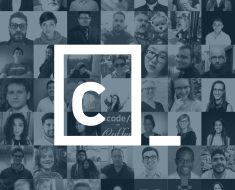At the recent AWS re:Invent conference in Las Vegas, AWS took a handful of press and analysts to the TPC Summerlin golf course in Las Vegas to understand how the PGA TOUR is considering using AI.
On the driving range, the PGA TOUR and AWS had set up a Generative AI demo with Scott Gutterman, Senior VP of Digital Operations with the PGA TOUR, and a handful of PGA TOUR and LPGA tour golf pros.
He presented a virtual interface built on data from the PGA TOUR’s ShotLink, powered by a CDW system, collected from 2005 to 2023. It included a massive 160,000 hours of video from their media asset management system, and 30 years of media guides in PDFs.
The application is built on various AWS tools, including Amazon Bedrock with the Anthropic Claude 2.0 Instant model, Amazon Kendra, and Amazon Athena.
Gutterman explained that the PGA TOUR and AWS have been working on creating a new experience with the AWS Generative AI Innovation Center for eight months. As impressive as the demo was, the potential is still greater. “We’ve all heard about ChatGPT and other platforms, and that’s caused many people to use these tools,” he said. “The PGA TOUR has been busy looking at what we can do and create for our players, fans, broadcasters, and for us internally.”
Generative AI: Interacting With the PGA Using Natural Language
The generative AI interface was demonstrated through a series of use cases where a question was posed, and the AI tool answered. Then the TOUR pro in attendance would try to replicate the golf shot in real time.
First up was the question, “What was Collin Morikawa’s longest drive at the Shriners Children’s Open?” which has been played at TPC Summerlin for several years. The bot answered that in 2019, Morikawa hit a 334-yard drive on the 15th hole. In addition to the information, the interface provided the actual TV footage from that shot. Morikawa then had three attempts to hit a drive that far.
Gutterman asked a series of questions, including Tony Finau’s longest drive at the Shriners Children’s Open, Charley Hull’s eagle, and Rose Zhang’s birdie from the 2023 US Women’s Open at Pebble Beach. In each case, the interface returned the relevant information and a video asset of the shot.
Generative AI Simplifies Search
After the demonstrations, I asked Gutterman about the generative aspect of what was shown. He explained that they’ve been able to search the data for some time, but you had to be precise about what you queried, and the response would be very specific.
In contrast, using large language models allowed the user to interact with natural language and then receive a response in natural language. Also, the tool packages up the relevant text and combines it with the video, providing more information to the user.
This is still in the beta phase, but Gutterman did talk about the tool’s potential. “The potential is massive,” he said. “When the players walk off the course, they could ask their personal bot how they did, and it could return a full performance report to help them prepare for the next round. They can learn much about what is happening within their game and what to work on.”
Gutterman also talked about the potential for the audience. “Our broadcasters could have better information on how each player performs on every course. They could use the data to help fans understand shot percentages, the likelihood of making putts, and more. For the fans, they could get information on players without digging through media guides and other data sources.”
Fans Gets an Enhanced Experience
Personally, I’m most excited about the fan-facing aspect of generative AI’s use by the PGA. When one watches a PGA TOUR event on TV, it’s hard, particularly for a casual fan, to fully understand how difficult the shots are. If, for instance, a viewer knew that a certain shot had only a 10% chance of success, that could add a lot of tension and excitement to the experience. AI enables the untrained eye to see things that experts can, and that’s a win for everyone.
Post-event, golf pro Adam Hadwin was kind enough to stay and chat with a few of us. We asked him about the potential. “The analytics can help us understand how to play certain shots,” he said. “As an example, the data might show that you’re better off missing the fairway left than right, so a player would then favor the left side. Or with a certain pin placement, the data might show that players three-put most often from a certain spot, so you’ll avoid that with your approach shot.”
Bottom Line: Generative AI is Changing Sports
The artificial intelligence era has arrived and will change almost every aspect of our lives. It was fascinating to see how the PGA TOUR is thinking of making its data more accessible to more audiences using generative AI.
It’s a good lesson for all businesses. Every company has massive amounts of data today, but it’s only useful if people can access the insights easily, and generative AI makes that possible.





